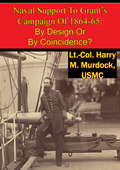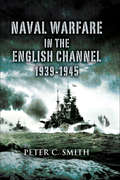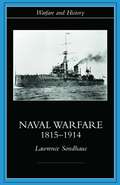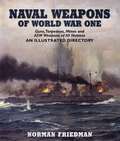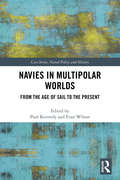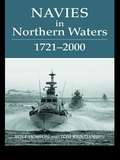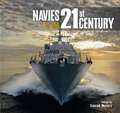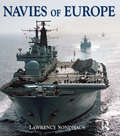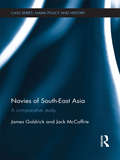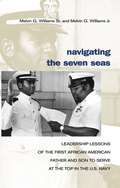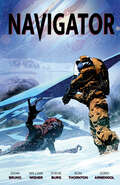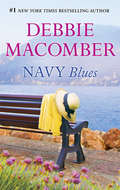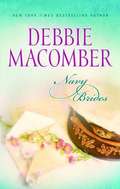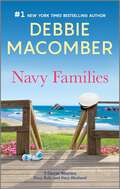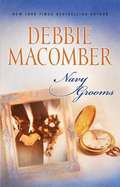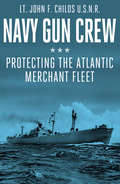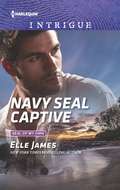- Table View
- List View
Naval Support To Grant’s Campaign Of 1864-65: By Design Or By Coincidence?
by Lt.-Col. Harry M. Murdock USMCBy 1863, the Civil War was basically a stalemate between the two belligerents. Though the Union forces had achieved some success in conducting joint expeditions that resulted in securing the Mississippi River and the majority of the Southern ports, the major land armies of the Union were generally ineffective. In March 1864, General Ulysses S. Grant was named General-in-Chief of the Union army; he designed a campaign for future operations that called for synchronized operations by the Union armies supported by the Union navy. This monograph examines the naval support to Grant's campaign to determine whether or not the provided support was by design or just coincidence.The monograph initially establishes the theater of war setting that Grant inherited when he assumed the billet of General-in-Chief. This is followed by a summary of the campaign from a naval perspective. The monograph concludes with an analysis of the naval support provided to the campaign using the four components of a successful campaign espoused in Lieutenant Colonel James Dubik's "A Guide to the Study of Operational Art and Campaign Design."Based on the analysis, it is evident that the naval support was provided by design. Grant demonstrated an extraordinary ability to visualize operations in the entire theater of war. He fully understood and appreciated the usefulness of the sea dimension and exploited its use. The Union navy's command of the seas and resourcefulness allowed Grant to maintain his freedom of action, to operate from secure bases of operation, and to destroy the South's capacity to wage war.
Naval Warfare 1919-45: An Operational History of the Volatile War at Sea
by Malcolm H. MurfettNaval Warfare 1919–45 is a comprehensive history of the war at sea from the end of the Great War to the end of World War Two. Showing the bewildering nature and complexity of the war facing those charged with fighting it around the world, this book ranges far and wide: sweeping across all naval theatres and those powers performing major, as well as minor, roles within them. Armed with the latest material from an extensive set of sources, Malcolm H. Murfett has written an absorbing as well as a comprehensive reference work. He demonstrates that superior equipment and the best intelligence, ominous power and systematic planning, vast finance and suitable training are often simply not enough in themselves to guarantee the successful outcome of a particular encounter at sea. Sometimes the narrow difference between victory and defeat hinges on those infinite variables: the individual’s performance under acute pressure and sheer luck. Naval Warfare 1919–45 is an analytical and interpretive study which is an accessible and fascinating read both for students and for interested members of the general public.
Naval Warfare in the 20th Century 1900-1945
by Gerald JordanThe development of naval warfare from the beginning of the 20th century to the end of World War II is covered in great detail.
Naval Warfare in the English Channel, 1939–1945
by Peter C. SmithFrom the year 1066 the English Channel has provided Great Britain with a natural defensive barrier, but never more than in the early days of World War Two. This book relates how the Royal Navy defended that vital seaway throughout the war. From the early days of the Dover Patrols, through the traumas of the Dunkirk evacuation, the battles of the Channel convoys; the war against the E-boats and U-boats; the tragic raids at Dieppe and St Nazaire; the escape of the German battle-fleet; coastal convoys; the Normandy landings and the final liberation of the Channel Islands. Many wartime photographs, charts and tables add to this superb account of this bitterly contested narrow sea.
Naval Warfare, 1815-1914 (Warfare and History)
by Lawrence SondhausThis book looks at the transition of wooden sailing fleets to the modern steel navy. It details the technological breakthroughs that brought about this change - steampower, armour, artillery and torpedoes, and looks at their affect on naval strategy and tactics.Part of the ever-growing and prestigious Warfare and History series, this book is a must for enthusiasts of military history.
Naval Weapons of World War One: Guns, Torpedoes, Mines and ASW Weapons of All Nations (An Illustrated Directory)
by Norman FriedmanAn in-depth reference to the naval weapons used by Britain, Germany, the US, and the other combatants in the Great War, with photos: &“Superb…invaluable.&”—History of War Although the Great War might be regarded as the heyday of the big-gun at sea, it also saw the maturing of underwater weapons, the mine and torpedo, as well as the first signs of the future potency of air power. Between 1914 and 1918 weapons development was both rapid and complex, so this book has two functions: on the one hand it details all the guns, torpedoes, mines, aerial bombs and anti-submarine systems employed during that period; but it also seeks to explain the background to their evolution: how the weapons were perceived at the time and how they were actually used. This involves a discussion of tactics and emphasizes the key enabling technology of fire control and gun mountings. In this respect, the book treats the war as a transition from naval weapons which were essentially experimental at its outbreak to a state where they pointed directly to what would be used in World War II. Based largely on original research, this sophisticated book is more than a catalogue of the weapons, offering insight into some of the most important technical and operational factors influencing the war at sea.
Navalism and the Emergence of American Sea Power: 1882-1893
by Mark Russell ShulmanThis book covers the range of US naval development from the beginning of the Navalism movement to the influence of the Mahanian doctrine on naval issues.
Navies in Multipolar Worlds: From the Age of Sail to the Present (Cass Series: Naval Policy and History)
by Paul Kennedy Evan WilsonRecent challenges to US maritime predominance suggests a return to great power competition at sea, and this new volume looks at how navies in previous eras of multipolarity grappled with similar challenges. The book follows the theme of multipolarity by analysing a wide range of historical and geographical case studies, thereby maintaining the focus of both its historical analysis and its policy implications. It begins by looking at the evolution of French naval policy from Louis XIV through to the end of the nineteenth century. It then examines how the British responded to multipolar threat environments, convoys, the challenges of demobilization, and the persistence of British naval power in the interwar period. There are also contributions regarding Japan’s turn away from the sea, the Italian navy, and multipolarity in the Arctic. This volume also addresses the regional and global distribution of forces; trade and communication protection; arms races; the emergence of naval challengers; fleet design; logistics; technology; civil-naval relations; and grand strategy, past, present, and future. This book will be of much interest to students of naval history, strategic studies and international relations history, as well as senior naval officers.
Navies in Northern Waters (Cass Series: Naval Policy and History #Vol. 26)
by Rolf Hobson Tom KristiansenNavies in Northern Waters is a collection of articles covering the roles played by the secondary navies of northern European powers and the United States within the maritime balance of power. The contributions covering the 18th and 19th centuries focus on their relations with each other as they sought to create a counterweight to the dominant naval power of Britain. The inter-war years are treated from the perspectives of international disarmament efforts within the framework of collective security, and the subsequent naval rivalry in the Baltic area in the years leading up to the Second World War. For the post-1945 period, the contributions concentrate on superpower rivalry in northern waters during the Cold War, the changing aspects of security policy since the collapse of the Soviet Union and the particular challenges facing small coastal states policing extensive waters of increasing economic importance.
Navies in the 21st Century
by Conrad Waters&“A range of naval experts . . . build[s] a diverse and deeply-thought out picture of where maritime warfare is now and where it is likely to go.&”—Army Rumour Service What is the purpose of navies in the modern world, and what types of warship does this require? This book tackles these questions by looking at naval developments, both technological and operational, in the quarter century since the end of the Cold War. It provides the overall political and economic context, assesses significant naval operations from the first Gulf War to Russia&’s annexation of Crimea, reviews changes in the objectives and composition of the principal fleets, describes major design developments amongst the main warship types, and examines wider technological and operational developments, including naval aviation, shipbuilding and manning. &“A high quality publication with a great many superb photographs. For those wishing to keep fully informed on world naval affairs, it is excellent value and strongly recommended.&”—Scuttlebutt &“This new book follows the successful approach and format of the very popular naval annual Seaforth&’s World Naval Review. Under the same editor, a new team of specialists have been assembled to write authoritative articles in their particular fields of expertise. The absorbing text is fully supported by many outstanding images—Most Recommended.&”—Firetrench &“Provides a most useful contextual analysis of the post-Cold War period, explaining how technological developments and a range of world events have variously shaped the fleets of today.&”—Warship
Navies of Europe
by Lawrence SondhausEurope ruled the waves for most of the modern era and even when its navies were eclipsed in size by the US force, they continued to dominate world wars. In this unique history of Europe's naval forces, Larry Sondhaus charts the development of naval warfare from the transition to steam to recent actions in the Persian Gulf. Combining detailed technical information with an in-depth comparison of warfare and tactics across some of the key conflicts of the modern world, this is an absorbing account of European and British seapower, past and present.
Navies of South-East Asia: A Comparative Study (Cass Series: Naval Policy and History)
by James Goldrick Jack McCaffrieThis book provides a comprehensive survey of the development and operations of the navies of South-East Asia since the end of World War II. The navies of South-East Asia have rarely been the subject of systematic attention but, as the maritime strategic balance within Asia becomes more complex and open to challenge through the rise of China, they will play increasingly significant roles. While most have had only limited strength in the past, the majority are acquiring new capabilities, notably submarines, which will profoundly alter their ability to influence events. This volume outlines the difficulties that each navy has faced in developing capability in competition, not only with local armies and air forces, but with other national requirements. The authors analyse the way in which each has been shaped by history and by changing maritime strategic concepts, particularly through developments such as the 1982 Law of the Sea Convention. Drawing upon this contextual information, the book goes on to examine how the navies are likely to develop in the future, what new challenges they will face and the nature of the roles they will play within a region of increasing global strategic significance. This book will be of much interest to students of naval policy, SE Asian politics, regional security, strategic studies and IR in general.
Navigating the Seven Seas
by Melvin G. Williams Jr. Melvin G. Williams Sr.Two high-achieving African-Americans in the U.S. Navy share their leadership experiences over nearly sixty consecutive years of service. Melvin G. Williams Sr. served in the Navy from 1951 to 1978 with a final assignment as a Command Master Chief. His son, Melvin G. Williams Jr., served from 1978 to 2010 with a final assignment as Commander, U.S. Second Fleet. Their book describes how they navigated through the ranks by employing what they call the Seven Cs of leadership: Character, Competence, Courage, Commitment, Caring, Communicating, and Community. The authors contend that their leadership principles can be learned, practiced, and refined for any profession.
Navigator
by John BrunoAn alien navigator, captured in battle on Jupiter&’s fourth moon, Europa, seeks sanctuary. In return, the alien will provide his advanced technology to help defend mankind from the alien force that enslaved him and has come to destroy us.In this backdrop is a story of love and reconciliation between a young Marine officer—placed in command of Earth&’s forces—his estranged wife, and Amy...the daughter he&’s never met.
Navy Blues
by Debbie MacomberAvailable as an ebook for the very first time! NAVY BLUES, the second in Debbie Macomber's popular series of Navy romances. She needed just one night with him... Despite her ex-husband's stubbornness, Carol Kyle knew he'd be the perfect man to father the child she so desperately wanted. Yet she also realized that this strong, honorable man would never allow his child to be raised without a father. So Carol needed to plot, to plan, to maneuver, to seduce Steve into her bed one last time... And then once more. Still, the passion when they were together had never been the problem; it was the absences that tore them apart. Had they grown enough to risk trying again--especially when Carol's plan seemed about to work?
Navy Board Ship Models
by Simon Stephens Nick BallA beautifully illustrated history of the early ship models of the Royal Navy that are prized today as works of art. From about the middle of the seventeenth century, the Royal Navy&’s administrators began to commission models of their ships that were accurately detailed and, for the first time, systematically to scale. These developed a recognized style, which included features like the unplanked lower hull with a simplified pattern of framing that emphasized the shape of the underwater body. Exquisitely crafted, these were always rare and highly prized objects—indeed, Samuel Pepys expressed a profound desire to own one, and today they are widely regarded as the acme of the ship modeler&’s art. Today, examples are the highlights of collections across the world, valued both as art objects and as potential historical evidence on matters of ship design. However, it was only recently that researchers began to investigate the circumstances of their construction, their function, and the identities of those who made them. This book, by two curators who have worked on the world&’s largest collection of these models at the National Maritime Museum in Greenwich, England, summarizes the current state of knowledge, outlines important discoveries, and applies this newfound understanding to many of the finest models in the collection. As befits its subject, Navy Board Ship Models is visually striking, with numerous color photographs that make it as attractive as it is informative to anyone with an interest in modelmaking or historic ships.
Navy Brides (Navy Omnibus #1)
by Debbie MacomberThis volume contains Navy Wife, Navy Blues and Navy Brat. In these three romances, men and women must balance love for each other with love for their country during their military deployment in the Navy.
Navy Dog: A Dog's Days in the US Navy
by Captain Neal J. KusumotoNavy Dog is a one-of-a-kind love story between a salty, battle-ready U.S. Navy crew and a little orphan dog.Having Seaman Jenna as the mascot on the USS Vandegrift was never meant to be a statement or symbolic act, or to put the crew on the radars of four-star admirals. Jenna came aboard unannounced, a Christmas gift that brought instant joy to the crew and transformed a gray ship into a home for 225 sailors. Her addition was not pre-approved by the chain of command—contrary to military protocol. Before long, Jenna became a phenomenon—the only dog on a Navy ship since World War II—despite the best efforts to keep her from the public eye. This orphaned Shiba Inu and the displaced crew shared countless adventures and trials during her five years on board. Jenna dodged being eaten in Korea (a country that still views dogs as edible fare), sidestepped Hawaii&’s strict quarantine law, avoided threats of being shot in Australia, charmed a Chinese admiral, and nearly initiated an international incident in Pakistan. Jenna became a symbol of the ship and of free will, and created a bond amongst the crew that remains strong decades later…long after her death. Neal Kusumoto is proud to say that he was the captain of that fine ship, blessed with a magnificent crew that included one special sea dog. Join Seaman Jenna as a part of the crew on her five-year adventure on the high seas.
Navy Families: A Novel
by Debbie Macomber"Macomber delivers her usual high-quality read, placing interesting characters in an emotionally volatile situation that has particular resonance in these times." —RT Book Reviews on Navy HusbandNavy heroes become family menNavy Baby It was a night she'd never forget: two strangers coming together in a moment of intense desire. But now, sheltered Hannah Raymond is expecting the child of a rugged naval seaman she thought she'd never see again. Riley Murdock has been searching for Hannah for months—ever since that soul-shaking night of passion. Now fate has reunited them. Determined to give his child the chance he never had, Riley marries Hannah. They've created the miracle of life together, but is that enough to spark love?Navy Husband Shana Berrie is her sister's official navy "parenting plan," so despite being unprepared, she's in charge of adorable nine-year-old Jazmine for the next six months. Shana isn't all that close to her niece, but she's trying her best. The little girl has lots of opinions—including ones on Shana's love life, or lack thereof. Shana also doesn't appreciate Jazmine's godfather, Lieutenant Commander Adam Kennedy, constantly checking up on her. She is definitely not looking for a navy husband, no matter what her meddling niece thinks. So why does infuriating Adam seem so appealing?
Navy Football: Return to Glory (Sports)
by T. C. CameronNavy football holds a unique place in college athletics as one of the oldest and most prestigious programs the game has ever known. During the 1950s and 1960s, the Midshipmen were nationally recognized by the major bowl games they played and Heisman Trophy-winning players Joe Bellino and Roger Staubach. Although the program struggled mightily to maintain relevancy in subsequent years, Athletic Director Chet Gladchuk kick-started the renaissance of Navy football by hiring Coach Paul Johnson in 2001. The team's current coach, Ken Niumatalolo, once fired by the academy in the dining room of a McDonald's in 1998, returned to become the winningest coach in school history. Author T.C. Cameron charts the story of Navy football and steers readers through the reemergence of an iconic program representing our nation's finest.
Navy Grooms (Navy Omnibus #2)
by Debbie MacomberNavy Woman Attorney Catherine Fredrickson loved her job at a submarine base in Washington, but her new boss, Royce Nyland, had her spirits sinking fast. He was distant but incredibly attractive. Struggling to keep afloat while caring for his daughter, Royce didn't need any more distractions. Though the laws of the sea deemed naval fraternizing taboo, how long could he resist romance? Navy Baby It was a night Hannah would never forget ... she is expecting the child of naval seaman Riley Murdock. Riley has been searching for Hannah for months - fate has finally reunited them. Determined to give his child the chance he'd never had, Riley marries Hannah. They had created the miracle of life together, but would that be enough to spark love? Navy Husband Shana Berrie, is her sister's official navy "parenting plan." That means she's in charge of her adorable niece Jazmine until her sis, Ali returns. Ali and Jazamine attempt to set Shana up with a family friend - Lt. Commander Adam Kennedy. Ali is not in the mood for a Navy husband, or is she?
Navy Gun Crew: Protecting the Atlantic Merchant Fleet
by Lieutenant John F. ChildsNavy Gun Crew, first published in 1944, is a firsthand look at a U.S. Navy gun crew assigned to a merchant marine ‘Liberty ship’ in the Atlantic during World War II. The Navy assigned a small gun crew to each merchant ship to provide protection against German U-boats and aircraft. In addition, one member of the crew was a signalman who could send and receive messages via signal flags and blinking light (radio use was limited to prevent the enemy from pinpointing the ship’s location). Navy Gun Crew examines the crew’s training, dockside duties, life at sea, encounters with submarines and aircraft, and a severe Atlantic storm. Although brief (the original book was 111 pages), it provides insight into a little-known yet vital part of the wartime effort to keep supplies flowing from the United States to Great Britain. Included are 27 pages of illustrations by Nils Hogner. Author Lt. John Childs (1910-2009) served in the U.S. Naval Reserve as head of a gun crew, followed by a long and successful finance career on Wall Street.
Navy SEAL Bodyguard (Aegis Security #2)
by Tawny WeberA undercover mission means deadly danger for an aspiring Aegis Security agent in this searing romance from the author of Navy SEAL to the Rescue.After his career as a SEAL is cut short by injury, Spence Lloyd is thrilled when he gets a top-secret assignment. But it’s hardly the death-defying action he’s used to. Instead, Spence must protect a high-ranking admiral’s beautiful daughter. As stubborn as she is alluring, Mia Cade presents a unique challenge to her bodyguard—one that will test his head and his heart . . .“Overall though be aware you will be drawn into this book and not want to put it down. You also might start to change the way you see the entire genre, yes her writing is really that good.” —Harlequin Junkie
Navy SEAL Captive
by Elle JamesSaving the SEAL Being abducted by a beautiful woman in Cancun wasn't part of Sawyer Houston's R & R mission. Jenna Broyles claims she's rescuing the vacationing navy SEAL from unknown assailants. Only it's her life on the line when the jilted bride becomes a target. The high-end Mexico resort was supposed to be Jenna's honeymoon destination. But after a dangerous discovery forces her to play hero, she's the one in need of the gorgeous stranger's expertise. As Jenna and Sawyer flee across treacherous tropical jungles, the heat between them builds to a fever pitch. Can they make safe haven before Sawyer's secrets get them both killed?
Navy SEAL Cop: His Forgotten Colton Fiancée Reunion Under Fire Navy Seal Cop The Cowboy's Deadly Mission (Code: Warrior SEALs #4)
by Cindy DeesA missing paranormal TV host stirs up a detective’s desire for the truth—and much more. A captivating romance from the New York Times–bestselling author.New Orleans detective Bastien LeBlanc is stumped by his new client, Carrie Price. The Navy SEAL must find Carrie’s kidnapped boss. Bass has never been a relationship kind of guy, so he’s floored by his undeniable attraction to Carrie. But can he trust her? Now all that can come between them are secrets from their pasts . . . and the all-too-real killer bearing down on them.
